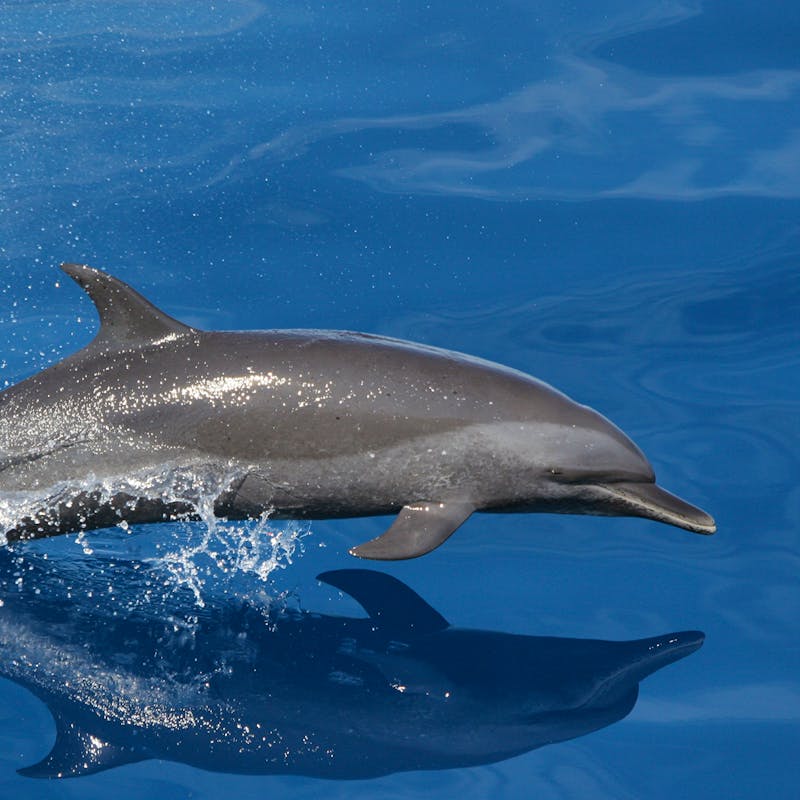
Photo: USFWS
Fighting the Fungus
In the race to save bats affected by the deadly white-nose syndrome, scientists from Michigan Technological University are using chemical “fingerprinting” to identify where bats hung out the previous summer.
Testing hair collected during hibernation, the researchers can match it to the hydrogen fingerprint of the geographic area where each bat grew the hair. The aim is to figure out the bats’ movements, which hibernation sites are connected, and how disease could be transmitted—and ultimately managed—among locations.
It’s not a moment too soon. The U.S. Fish and Wildlife Service recently confirmed white-nose syndrome now afflicts the federally listed endangered gray bats in Tennessee—upping the count to seven species.
One hopeful note: The gregarious little brown bat, which prefers to roost in dense clusters, is changing its social behavior in response to the disease, according to University of California-Santa Cruz scientists. “We now see up to 75 percent of them roosting singly,” says Kate Langwig, lead author of the paper. “This study gives us an indication of which species face the highest likelihood of extinction, so we can focus management efforts and resources on protecting those species.”
Lost & Found
Defenders’ central Idaho field team searched for weeks for the pack of a wolf pup (far left) after out-of-state campers mistakenly thought they were rescuing an abandoned puppy over Memorial Day weekend. They watched the pup from a running car for about an hour—probably keeping the rest of the pack from coming for him. “Unfortunately, it has become much more difficult to track wolf activity in the last year or so since most of the collaRed Wolves have been killed during the wolf hunting and trapping seasons,” says Suzanne Stone, Defenders’ Northern Rockies representative. A month later, a Defenders’ trail camera snapped photos of an adult female (left), which in all likelihood is the mother, four miles from where the pup was picked up. But by then Idaho wildlife officials had already sent him to Busch Gardens in Williamsburg, Va. “We’d have much rather seen the pup survive in the wild,” says Stone. “We just ran out of time.”
3.3° F
Degrees that the average July temperature in the Lower 48 was above the 20th-century average.
The 12-month period from June 2011 to May 2012 is the hottest in U.S. history.
Source: National Oceanographic and Atmospheric Administration (NOAA)
After the Spill
Dolphin deaths have occurred in historically high numbers since the BP oil catastrophe in the Gulf of Mexico, according to a University of Central Florida study published in the scientific journal PLos ONE in July. Most troubling to scientists is the high number of young dolphins—close to half of the 186 that washed ashore from Louisiana to western Florida from January to April 2011. The number of pregnant dolphins stranded during this four-month period was six times higher than the average number since 2003.
The scientists report that a cold spell prior to the spill would have already reduced their food sources, weakening the dolphins and compromising their immune system. The 2011 cold spell that followed the spill didn’t help matters. “Unfortunately, it was a ‘perfect storm’ that led to the dolphin deaths,” says Graham Worthy, the study’s co-author.
Meanwhile oil and clean-up chemicals from the spill are showing up in migrating pelicans in Minnesota—home of the largest colony of American white pelicans in North America. Nearly 80 percent of the eggs tested so far contained endocrine-disrupting chemical dispersants, used to break up oil slicks on the water, and 90 percent contained cancer-causing petroleum compounds. This could be a big problem for developing embryos. When things go wrong at that stage there’s usually no recovery, says Mark Clark, an ecologist at North Dakota State University, who is helping the Minnesota Department of Natural Resources look for oil-related contaminants.
Defenders continues to fight risky offshore drilling, including in the Arctic, where below freezing temperatures and ice clogged seas would make cleanup nearly impossible much of the year. Despite this, the Obama administration allowed Shell to begin exploratory drilling in the Chukchi Sea in September. “Apparently, the lesson from BP’s Deepwater Horizon oil spill has not soaked in to the Obama administration,” says Defenders’ President Jamie Rappaport Clark. “There’s no way to drill safely in remote, environmentally sensitive areas like the Arctic Ocean, and no technology exists to clean up an oil spill in the arctic environment with its hurricane force winds, 40-foot wave swells and unpredictable ice floes. To protect the wealth of wildlife here—including polar bears, Pacific walruses and bowhead whales—the Obama administration should proceed with an abundance of caution and oppose expanded drilling in the Arctic.”
Find out more at defenders.org/offshoredrilling.
Only select articles from Defenders are available online. To receive 4 issues annually of the full award-winning magazine, become a member of Defenders of Wildlife!


